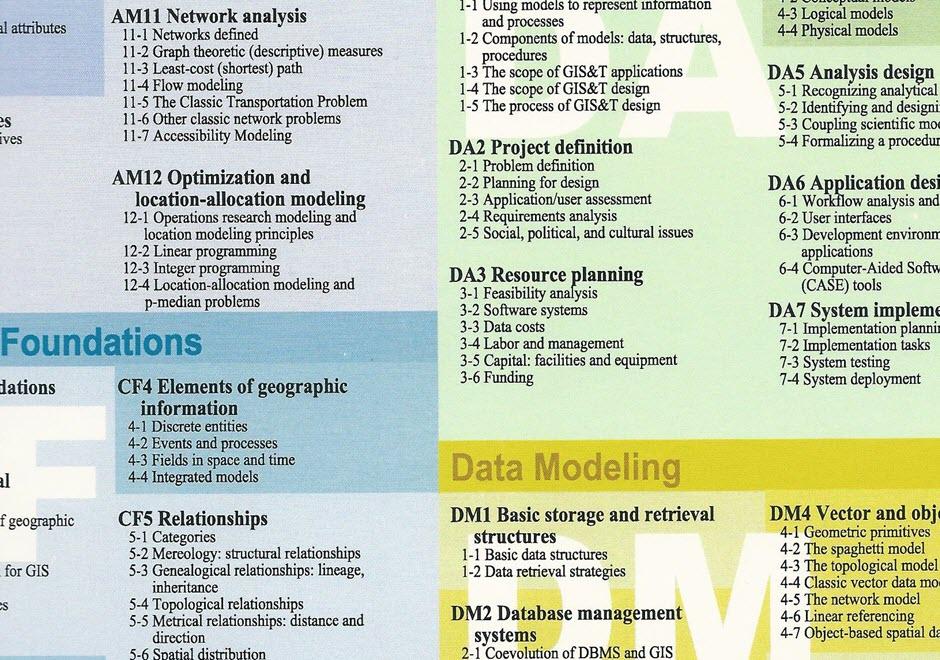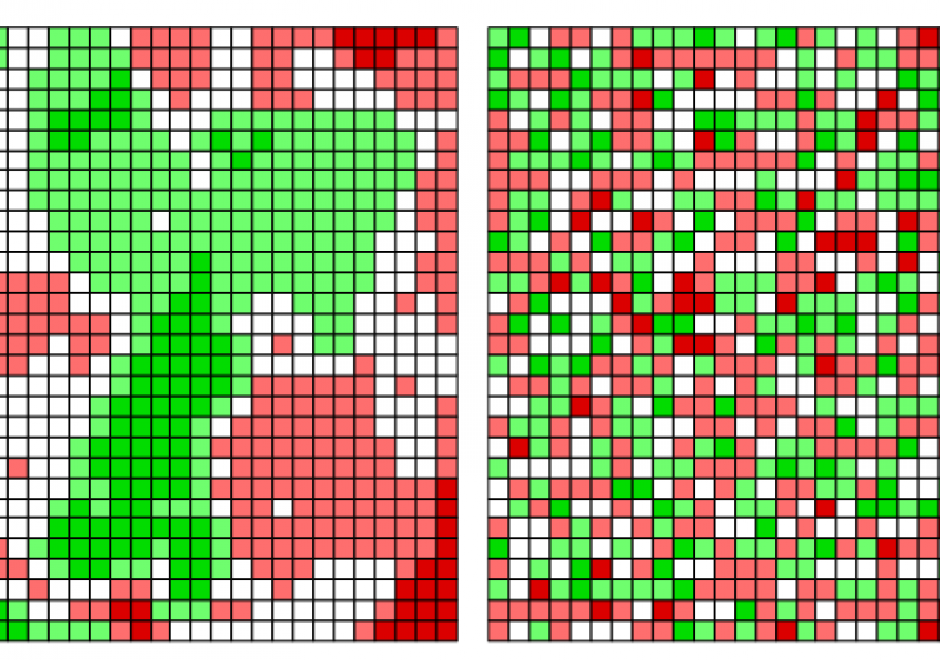AM-25 - Bayesian methods

- Define “prior and posterior distributions” and “Markov-Chain Monte Carlo”
- Explain how the Bayesian perspective is a unified framework from which to view uncertainty
- Compare and contrast Bayesian methods and classical “frequentist” statistical methods





FC-37 - Spatial Autocorrelation
The scientific term spatial autocorrelation describes Tobler’s first law of geography: everything is related to everything else, but nearby things are more related than distant things. Spatial autocorrelation has a:
Positive spatial autocorrelation constitutes the focal point of its past and present; one expectation is that negative spatial autocorrelation will become a focal point of its future.